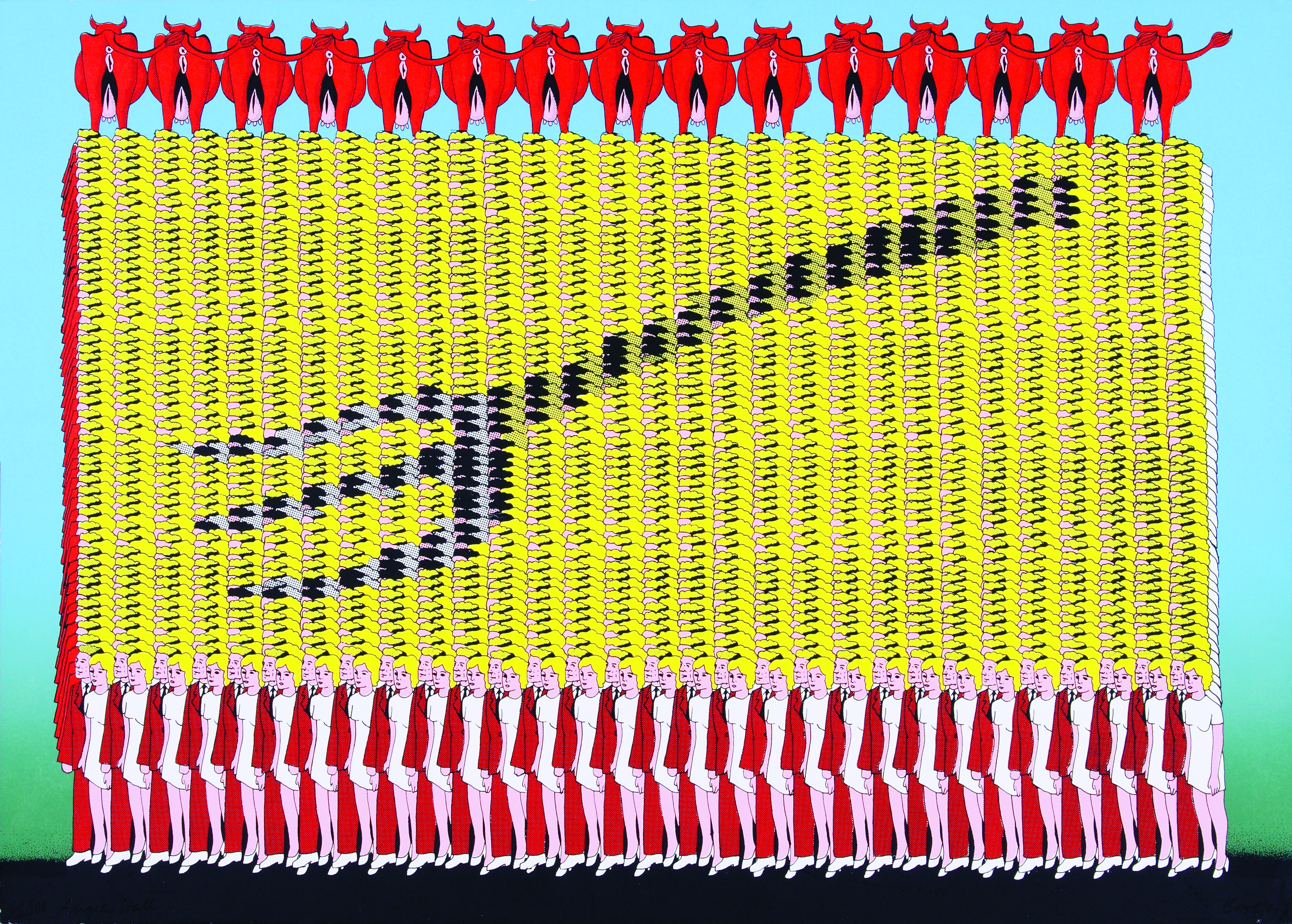Screenprint on cardboard
Dimensions: 47.6 x 65.6 cm
Signature, inscriptions, markings: signed and dated at lower right, numbered at lower left
Copy Number: 1/100
Accession Number: 1002011
To clean Augias' stable, the fifth of his twelve tasks, Hercules mastered by directing a river through the cattle yard and having it remove the legacies of Augias' enormous herd. Augias Stall is the title of a silkscreen print by Thomas Bayrle.1 He reproduces the various objects so often that, when put together, they form a new image, with the large picture corresponding to the individual objects and thus acquiring an inner coherence. In this form of special reproduction of a mass-media image motif, Bayrle, as a German artist, follows American Pop Art and Minimal Art.
At first glance, one sees a dark pitchfork on a yellow background and above it a row of reddish-brown cows presenting their rear view to the viewer. Only now do you notice that the yellow ground is formed by the scoops of men in red suits and women in white dresses, alternately crowded together to form a rectangle. Only the front row is fully depicted, while of the remaining people only the heads are recognizable. Having become aware of this, one looks for further details that might have escaped one's attention and begins to count the heads. The picture shows 15 cows, each of whose tail ends touch the tail base of the neighboring cow on the right, forming a kind of garland. The yellow rectangle is made up of 2820 individuals arranged in 30 vertical rows of 47 pairs each. In their rigid alignment, they are reminiscent of a military formation. Any trace of individuality seems blurred, were it not for the comparatively small group of those 254 people whose dark heads form the pitchfork.
One now begins to interpret, to puzzle over what this could mean. Do the cows represent the dung in the heads of the straw-blond crowd, whose thinking is to be mucked out by a different minority of lateral thinkers? Is this a reference to the mindless consumption of the masses, to their conformity, their uniformity? Or does the crowd represent the ideal of the Aryan man, who in his racial unity becomes a farce himself? Everything is possible. But perhaps this work is only directed against the mass consumption of sausages with red and white fries.
Veronika Berger
1 Thomas Bayrle, Graphik von 1967-72 und animierte Graphik von 1979-94, Cologne 1995; Cat. exhib. Thomas Bayrle, ed. by Sabine Schulze, Städelsches Kunstinstitut, Frankfurt a. M. 2002.
